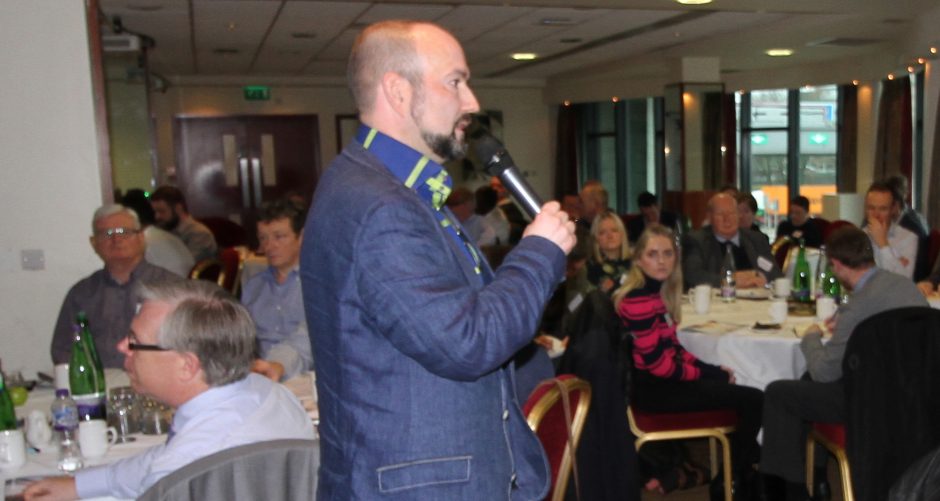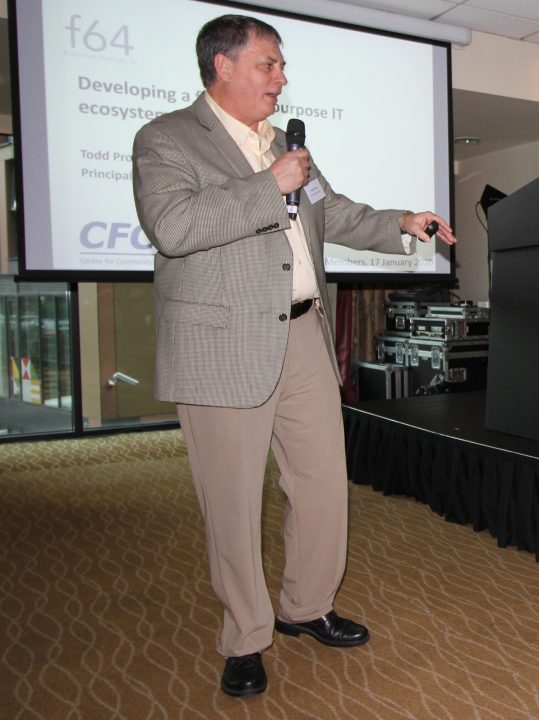With new tech trends continuing to transform and disrupt all sectors of the economy, delegates from the credit union sector met to discuss the implications of open banking, social networking and IT systems.
The conference, held in Manchester, was organised by the Centre for Community Finance Europe, an organisation which generates academic research to help credit unions keep up with the latest changes –
following a model based on the Filene Research Institute in the USA.
Rob McIntosh, communities lead at the Dozens fintech, said that until the rise in the 1960s of chain retailers and big brands which sell identical products to a mass audience, the consumer experience had been a personal one. This personal experience is being revived in a digital landscape, making it important for businesses to build communities for their customers or members.
“A community is a group of people with a shared identity or interest,” he said. “Credit unions have the common bond but that’s not enough. You can be part of a common bond by default.”

Credit unions require that members share something in common, a ‘common bond’ that could be anything from an employer to a location. This effects who is eligible to join. But, says Mr McIntosh, credit unions building a digital community must also identify shared values and needs – and then give that community something to do.
He gave the example of his time building digital communities at the Wine Society co-op, which enabled members to talk to each other. Positive comments on wine serve as valuable recommendations; negative comments are useful feedback for buyers and growers.
“People don’t just want to talk about your product,” he added. “They want to talk about what their issues and needs are – the conversation is about them.”
For credit unions this means issues such as financial wellness. Positive comments can be used for testimonials on literature – and even negative comments can help a credit union identify and act on a problem. “One online comment can save you from a lot of phone calls,” said Mr McIntosh.
Marloes Nicholls, head of programmes at the Finance Innovation Lab, gave a presentation on the implications of open banking – which gives third-party financial service providers open access to bank data to drive competition. This means the nine largest UK banks and building societies must share data with FCA-regulated third parties.
It is hoped this will benefit consumers by £12bn a year, by enabling them to switch accounts more frequently and access new financial products.
“It’s a huge experiment,” she said. “We have never before seen technology used on this scale to rebalance power in the market.”
Open banking could help credit unions, she said, by making it easier to check affordability and credit risk among customers, by improving their understanding of members’ financial health and enabling more proactive support for those with problems, by reducing the time and cost of lending, and enabling the tailoring of financial products.
There are also risks, she warned: data is still open to misinterpretation; there is a danger of financial exclusion for people without access to online banking; and organisations are liable for data breaches by third parties.
Ms Nicholls also highlighted the need for full review of the impact of open data on decision making. And there are people issues – such as the effect of automated decision making previously taken by skilled staff; the ability of members to understand new apps; and the question of public distrust when it comes to use of financial data.
“But we are seeing credit unions use open banking with some success,” she said. “Open banking is changing the financial landscape – it’s here.”

In the next presenttion, Todd Proulx, owner of Minneapolis-based f64 business services, which provides advice on core IT systems to credit unions and other IT providers, said more than 600 credit unions in the US have switched core IT provider in the past five years.
It is important to do this “as soon as the pain of staying with an outdated system is greater than the pain of making the switch,” he said, warning that problems could mount if an old core system is no longer capable of adding new features and relies on patches; if it doesn’t allow a credit union to keep its systems open and connected; or if its support team does not respond to requests for help.
But switching core providers is not an answer to all problems, said Mr Proulx; people and processes are more significant factors, and it is important to bear in mind the effect a change of core will have on staff. If it leads to some processes becoming automated, this can leave employees displaced – but can also free them up to spend more time on members with financial problems who need assistance.
Making the switch is also a difficult process. Likening this to “rebuilding an aeroplane in the sky”, Mr Proulx warned credit unions to “expect
the unexpected” and make preparations – for instance by having extra staff on at the time of transition to help members having difficulty accessing services.
But having the right core system is crucial, he said, for credit unions to maintain seamless services across all delivery channels, from mobile to branch, and centre their operations on the needs of members rather than separating them into different silos.
This post was amended on 24 January, correcting the figure given by Marloes Nicholls in paragraph 10 to £12bn.

